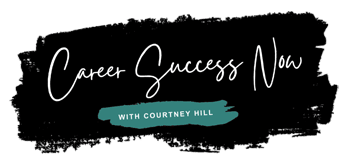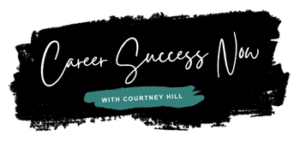In today’s competitive job market, having a well-crafted resume is crucial for standing out to potential employers. Your resume is often the first impression you make, and it needs to effectively showcase your skills, experience, and qualifications. This article will guide you through the essentials of creating a compelling resume, common pitfalls to avoid, and the benefits of seeking professional help. By the end, you’ll have the knowledge to produce a resume that enhances your chances of landing your desired job.
A. Importance of a Well-Crafted Resume
A resume serves as a personal marketing document. It highlights your professional history and qualifications, aiming to convince employers that you are the best fit for the position. Given the limited time recruiters spend on each resume—often just a few seconds—a well-crafted resume can make a significant difference. It not only increases your chances of getting an interview but also sets the tone for your professional image.
B. Purpose of the Article
The purpose of this article is to provide comprehensive guidance on creating an effective resume. Whether you’re a recent graduate, a mid-career professional, or looking to change careers, this article will offer valuable insights and practical tips. We will cover everything from understanding resume basics to seeking professional help and leveraging technology to streamline the resume-building process.
C. Overview of What Will Be Covered
We will start by discussing the basics of a resume, including its purpose and key components. Next, we will delve into crafting a compelling resume, highlighting the importance of tailoring it to specific job descriptions. We will then address common resume mistakes and provide design and formatting tips. Furthermore, we will explore how technology can aid in resume building and when it might be beneficial to seek professional help. Real-life examples and success stories will illustrate these concepts in action. Finally, we will provide a summary of key points and additional resources for further learning.
II. Understanding the Basics of a Resume
A. Definition and Purpose of a Resume
A resume is a formal document that summarizes your career history, skills, education, and accomplishments. Its primary purpose is to provide potential employers with a snapshot of your professional background, demonstrating your suitability for a particular role. A well-structured resume helps recruiters quickly assess your qualifications and decide if they want to invite you for an interview.
B. Types of Resumes
There are several types of resumes, each suited for different career situations. Choosing the right type can enhance how your qualifications are presented.
1. Chronological
The chronological resume is the most common format. It lists your work experience in reverse chronological order, starting with your most recent position. This format is ideal for individuals with a steady work history in the same field.
2. Functional
A functional resume focuses on skills and experience rather than chronological work history. It’s suitable for those with gaps in their employment, career changers, or individuals with diverse job experiences that don’t align neatly.
3. Combination
The combination resume merges elements of both the chronological and functional formats. It highlights skills and qualifications first, followed by a chronological listing of work experience. This format is beneficial for those with a solid career history who also want to emphasize specific skills.
4. Targeted
A targeted resume is customized for a specific job or company. Every detail, from the objective to the work experience, is tailored to match the job requirements. This format requires more effort but can be highly effective in demonstrating your suitability for a particular role.
C. Key Components of a Resume
Regardless of the type, most resumes share common components. These sections help structure your resume in a way that is easy to read and highlights your qualifications.
1. Contact Information
This section should include your full name, phone number, email address, and LinkedIn profile (if applicable). Ensure your email address is professional.
2. Objective or Summary
An objective is a brief statement of your career goals and how they align with the position. A summary, on the other hand, provides a snapshot of your professional qualifications and achievements. Choose one based on your experience and the job you’re applying for.
3. Work Experience
List your work history in reverse chronological order. Include the job title, company name, location, and dates of employment. Use bullet points to describe your responsibilities and achievements.
4. Education
Detail your educational background, including the degrees you’ve earned, the institutions you attended, and the dates of graduation. Include any relevant coursework, honors, or extracurricular activities.
5. Skills
Highlight key skills that are relevant to the job. This can include both hard skills (technical abilities) and soft skills (interpersonal abilities).
6. Certifications and Awards
Include any certifications, licenses, or awards that are relevant to your career. This can help set you apart from other candidates.
III. Crafting a Compelling Resume
A. Tailoring Your Resume to the Job
Tailoring your resume to the job you are applying for is crucial. It shows employers that you have taken the time to understand the role and how your skills and experiences make you a perfect fit.
1. Analyzing the Job Description
Carefully read the job description and identify the key qualifications and skills required. Highlight keywords and phrases that are frequently mentioned, as these are likely what the employer is looking for.
2. Highlighting Relevant Experience and Skills
Align your resume with the job description by emphasizing your relevant experience and skills. Use the same language and terminology found in the job posting to demonstrate your fit.
B. Writing an Effective Summary or Objective
1. Crafting a Summary
A strong summary provides a quick overview of your qualifications. It should be concise and highlight your most relevant achievements and skills.
Example: “Experienced marketing professional with over 10 years of experience in digital marketing and brand management. Proven track record in driving successful campaigns and increasing brand awareness. Adept at using data analytics to optimize marketing strategies.”
2. Crafting an Objective
An objective statement is more suitable for entry-level positions or career changers. It should be brief and focused on your career goals and how they align with the company’s objectives.
Example: “Recent graduate with a degree in Business Administration seeking an entry-level position in marketing. Eager to apply strong analytical skills and creativity to support innovative marketing strategies at XYZ Company.”
C. Showcasing Your Work Experience
Your work experience is a critical section of your resume. It should highlight your achievements and responsibilities in a way that is relevant to the job you are applying for.
1. Using Action Verbs
Start each bullet point with a strong action verb to convey your responsibilities and achievements more dynamically.
Example:
- Developed and implemented a social media strategy that increased followers by 30%.
- Managed a team of five sales associates, resulting in a 15% increase in quarterly sales.
2. Quantifying Achievements
Whenever possible, use numbers to quantify your achievements. This provides concrete evidence of your impact and can make your resume stand out.
Example:
- Increased website traffic by 50% through targeted SEO strategies.
- Reduced operational costs by 20% through process optimization.
3. Describing Responsibilities and Impact
Go beyond listing your duties by describing the impact of your work. Explain how your contributions benefited the company.
Example:
- Led the redesign of the company’s website, resulting in a 25% increase in user engagement and a 15% boost in sales.
D. Highlighting Education and Certifications
Your education and certifications can set you apart from other candidates, especially if they are highly relevant to the job.
Example:
- Bachelor of Science in Computer Science, University of Technology, 2020
- Certified Project Management Professional (PMP), 2021
E. Listing Skills and Competencies
1. Hard Skills
Include technical abilities and specialized knowledge that are relevant to the job.
Example:
- Proficient in Python, Java, and SQL
- Advanced knowledge of Adobe Creative Suite
2. Soft Skills
Highlight interpersonal skills that demonstrate your ability to work well with others and handle various workplace situations.
Example:
- Strong communication and presentation skills
- Excellent problem-solving and analytical abilities
F. Including Optional Sections
Depending on your experience and the job you are applying for, you may want to include additional sections to showcase other relevant aspects of your background.
1. Projects
Highlight significant projects that demonstrate your skills and achievements.
Example:
- Developed a mobile app that reached 10,000 downloads within the first month of launch.
2. Volunteer Work
Include volunteer experiences that are relevant to the job or demonstrate valuable skills.
Example:
- Volunteered as a marketing coordinator for a local non-profit, increasing event attendance by 40%.
IV. Common Resume Mistakes and How to Avoid Them
A. Typos and Grammatical Errors
Mistakes in spelling and grammar can create a negative impression. Always proofread your resume carefully and consider using tools like Grammarly to catch errors.
B. Using an Unprofessional Email Address
Ensure your email address is professional. Avoid using nicknames or humorous addresses that could be seen as unprofessional.
Example:
- Professional: john.doe@example.com
- Unprofessional: cooldude123@example.com
C. Overloading with Information
Keep your resume concise and focused. Avoid the temptation to include every job you’ve ever had, and instead focus on the most relevant positions.
D. Being Too Vague
Be specific about your achievements and responsibilities. Avoid vague statements that don’t provide concrete information about your role or impact.
E. Including Irrelevant Information
Only include information that is relevant to the job you are applying for. Leave out hobbies, personal details, or unrelated job experiences unless they demonstrate relevant skills.
F. Using a One-Size-Fits-All Approach
Tailor your resume for each job application. Using a generic resume can make it seem like you’re not genuinely interested in the specific role.
V. Resume Design and Formatting Tips
A. Choosing the Right Format
Select a resume format that best highlights your strengths and fits your career situation. Whether you choose chronological, functional, combination, or targeted, ensure it aligns with your career goals.
B. Font Style and Size
Use a clean, professional font such as Arial, Calibri, or Times New Roman. Keep the font size between 10 and 12 points for the main text, and slightly larger for headings.
C. Using Bullet Points Effectively
Bullet points make your resume easy to read and help break up large blocks of text. Use them to list responsibilities, achievements, and skills.
D. Keeping It Clean and Simple
Avoid cluttered designs and excessive use of colors or graphics. A clean, simple layout is easier to read and looks more professional.
E. Utilizing White Space
Proper use of white space can make your resume more readable and visually appealing. Ensure there is enough spacing between sections and bullet points.
F. Length of the Resume
For most professionals, a one-page resume is sufficient. If you have extensive experience, a two-page resume is acceptable. Ensure that every piece of information included adds value and relevance.
VI. Leveraging Technology for Resume Building
A. Using Resume Templates
Resume templates can provide a professional layout and structure, saving you time. Many word processing programs and online platforms offer free templates.
B. Online Resume Builders
Online resume builders can simplify the resume creation process. These tools offer customizable templates and step-by-step guidance.
Examples:
- Zety
- ResumeGenius
C. Applicant Tracking Systems (ATS)
1. Understanding ATS
Many employers use ATS to screen resumes. These systems scan for keywords and filter out resumes that don’t match the job description.
2. Ensuring ATS Compatibility
To ensure your resume passes through ATS:
- Use standard headings (e.g., “Work Experience” instead of “Professional Journey”)
- Incorporate keywords from the job description
- Avoid complex formatting like tables or graphics
VII. Seeking Professional Resume Help
A. When to Consider Professional Help
Consider professional help if:
- You’re not getting interview callbacks
- You’re transitioning careers and need to reframe your experience
- You’re applying for senior-level positions
B. Types of Professional Resume Services
1. Resume Writing Services
Professional writers can create a resume from scratch, highlighting your strengths and ensuring it aligns with industry standards.
2. Resume Editing Services
If you have a draft resume, editing services can help refine it, correct errors, and improve formatting.
3. Career Coaching
Career coaches offer more comprehensive support, including resume writing, job search strategies, and interview preparation.
C. How to Choose a Professional Resume Service
1. Researching and Reading Reviews
Look for services with positive reviews and testimonials. Research their process and the qualifications of their writers.
2. Assessing Credentials and Experience
Choose services with certified professional resume writers (CPRW) or those with experience in your industry.
3. Understanding the Process and Costs
Understand the services offered, turnaround time, and costs. Ensure there are no hidden fees and that you know what you’re getting for your investment.
VIII. Real-Life Examples and Success Stories
A. Example 1: Recent Graduate
Emily, a recent graduate with a degree in marketing, struggled to find a job. She revamped her resume with the help of a career coach, highlighting her internships and relevant coursework. She landed a marketing coordinator role within two months.
B. Example 2: Mid-Career Professional
Tom, with 15 years of experience in finance, wanted to transition to a tech role. By focusing on his transferable skills and gaining relevant certifications, his resume attracted attention from tech companies. He successfully secured a project management position.
C. Example 3: Career Changer
Lisa, a teacher for 10 years, sought a career in corporate training. She emphasized her teaching skills and experience in curriculum development. With a tailored resume, she transitioned into a training and development role in a corporate setting.
D. Example 4: Executive-Level Professional
John, an executive looking for a C-suite position, struggled to convey his extensive experience effectively. A professional resume writer helped him create a powerful executive resume, leading to multiple interview offers for VP roles.
IX. Conclusion
A. Summary of Key Points
Crafting an effective resume involves understanding the basics, tailoring it to the job, avoiding common mistakes, and leveraging technology. It’s a process that requires attention to detail and a clear focus on presenting your qualifications.
B. Final Tips for Crafting an Effective Resume
- Tailor your resume for each job application
- Use action verbs and quantify achievements
- Keep the design clean and professional
- Proofread to eliminate errors
C. Encouragement to Take Action
Invest time in creating a strong resume that reflects your professional identity. Whether you seek professional help or use online tools, a well-crafted resume can significantly enhance your job search success.
X. Additional Resources
A. Recommended Books and Guides
- “What Color Is Your Parachute?” by Richard N. Bolles
- “The Elements of Resume Style” by Scott Bennett
B. Online Tools and Templates
- Canva
- Novoresume
C. Workshops and Courses on Resume Writing
- LinkedIn Learning
- Coursera’s Career Success Specialization
By utilizing these resources, you can continue to refine your resume and advance your career. Understanding the importance of a well-crafted resume and taking steps to improve it can significantly impact your job search success.




